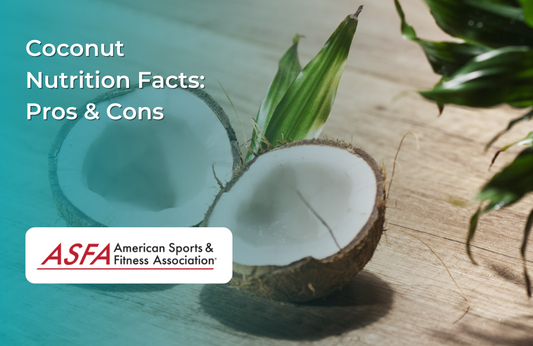If you’ve ever started a new workout routine or pushed yourself harder during a training session, chances are you’ve experienced sore muscles and muscle pain. Known as delayed onset muscle soreness (DOMS), this soreness typically begins after intense or unfamiliar physical activity. But what exactly is DOMS? Is it a sign of progress, or should you be concerned when you experience muscle soreness? In this in-depth guide, we’ll explore the science behind sore muscles, whether they indicate progress or problems, and how to manage them effectively.
The Nature of Sore Muscles: What Is Delayed Onset Muscle Soreness?
Sore muscles, particularly DOMS, occur due to microscopic damage to the muscle fibers, leading to muscle aches. When you engage in physical activities that your muscles aren’t accustomed to, or you push your muscles to new levels of intensity, this causes small micro-tears in the muscle fibers. These micro-tears trigger an inflammatory response, leading to the sensation of muscle soreness. Typically, the soreness manifests between 24 to 48 hours after exercise, and it can last several days depending on the intensity of the workout and the recovery process.
What is Muscle Soreness?
Muscle soreness, also known as delayed onset muscle soreness (DOMS), is a common experience for many people, especially after engaging in intense exercise or physical activity. It is characterized by pain, stiffness, and limited range of motion in the affected muscle group. This type of soreness typically sets in after activities that your muscles aren’t accustomed to, or when you push your muscles to new levels of intensity. While muscle soreness can occur in any muscle group, it is most commonly felt in the legs, arms, and back. The discomfort usually peaks within 24 to 48 hours post-exercise and can last for several days as your muscles recover and adapt to the new demands placed on them.
Causes of Muscle Soreness
Muscle soreness is primarily caused by micro-tears in muscle fibers and the surrounding connective tissues. When you engage in intense exercise, especially if you’re new to it or increasing the intensity, these micro-tears occur, leading to inflammation and the subsequent repair process. This cycle of damage and repair is what causes the pain and stiffness associated with DOMS. Several factors can contribute to muscle soreness, including:
-
Overuse or repetitive strain on a particular muscle group
-
Poor warm-up or cool-down techniques, which can leave muscles unprepared for the stress of exercise
-
Insufficient rest and recovery time, preventing muscles from healing properly
-
Inadequate nutrition and hydration, which are crucial for muscle repair and function
-
Muscle imbalances or poor posture, which can place uneven stress on muscles
Understanding these causes can help you take steps to minimize soreness and improve your overall exercise experience.
Is Muscle Soreness a Good Sign?
In most cases, sore muscles are a positive sign that your body is adapting to new physical demands. When you perform exercises like weightlifting or introduce new movements into your routine, it’s important to pay attention to the affected body part to ensure proper recovery. Your muscles experience stress, leading to microscopic tears. The soreness you feel is the result of your body repairing and strengthening these damaged fibers. This repair process results in muscle hypertrophy—the enlargement of muscle fibers—and is a crucial part of gaining strength and improving endurance. Essentially, muscle soreness indicates that you’re pushing your body to grow and adapt, which is a key aspect of fitness progression.
Benefits and Signs of Progress
While muscle soreness can be uncomfortable, it is often a sign that your muscles are adapting to the demands you’re placing on them. As your muscles recover and rebuild, they become stronger and more resilient. Some benefits of experiencing muscle soreness include:
-
Increased muscle strength and endurance, as your muscles repair and grow stronger
-
Improved muscle tone and definition, resulting from the hypertrophy process
-
Enhanced athletic performance, as your muscles become more efficient at handling physical stress
-
Improved overall health and well-being, as regular exercise contributes to better physical fitness
Signs of progress in your fitness journey include:
-
Reduced muscle soreness over time, indicating that your muscles are adapting to the exercise
-
Increased range of motion and flexibility, as your muscles become more accustomed to the movements
-
Improved muscle strength and endurance, allowing you to perform exercises with greater ease
-
Enhanced athletic performance, as your body becomes more efficient at handling physical demands
These signs show that your body is responding positively to your training efforts, leading to better fitness outcomes.
The Science Behind DOMS and Muscle Fibers Adaptation
DOMS is primarily linked to eccentric muscle contractions, which occur when a muscle lengthens under tension. For example, during the lowering phase of a bicep curl or the downward motion of a squat, your muscles are working eccentrically. These movements are more likely to cause muscle damage and soreness than concentric contractions, where the muscle shortens during exertion.
The process of muscle adaptation that leads to soreness is a natural part of building muscle and endurance. As your muscles undergo stress, they respond by becoming more resilient. Over time, as you continue to train, your body adapts, and the intensity of DOMS tends to lessen. This means that soreness can be a good indicator of progress—your muscles are getting stronger and becoming more efficient at handling physical demands. In cases where muscle soreness persists, physical therapy may be necessary to address underlying issues and promote recovery.
Progressive Overload and Soreness
Muscle soreness is often associated with the principle of progressive overload, which is a key factor in strength training and muscle development. Progressive overload refers to gradually increasing the amount of stress placed on the muscles by either lifting heavier weights, performing more repetitions, or increasing the intensity of a workout. This continued challenge forces the muscles to adapt, repair, and grow stronger. When soreness arises from this process, it is a sign that your body is responding to the increased demands. Consulting with a sports medicine specialist can provide insights into effective training strategies and injury prevention.
However, it’s important to distinguish between soreness and pushing yourself too far. While mild to moderate soreness can be a sign of effective training, extreme soreness may indicate overtraining or improper form. Gradual increases in workload are key to ensuring that you’re challenging your muscles appropriately without risking injury or burnout.
Differentiating Between Muscle Soreness and Acute Pain
While muscle soreness is usually a normal part of exercising, it’s important to differentiate between DOMS and acute pain. DOMS typically feels like a dull, achy sensation in the muscles, and it may be accompanied by stiffness or tenderness. This soreness peaks within 24 to 48 hours and gradually subsides as your body recovers. Understanding the difference between DOMS and acute pain is crucial for maintaining the health of the affected body.
Acute pain, on the other hand, is sharp, sudden, and often more intense. It may occur during exercise or immediately afterward and is often a sign of injury, such as a muscle strain, joint issue, or ligament tear. If you experience acute pain, especially if it’s accompanied by swelling, bruising, or reduced range of motion, it’s important to stop exercising and seek medical attention. Continuing to push through acute pain can worsen the injury and lead to long-term issues.
Managing Muscle Soreness: Strategies to Reduce Muscle Soreness
While DOMS is typically a normal response to exercise, managing muscle soreness effectively is crucial for optimizing recovery and preventing injuries. Here are several strategies to help alleviate soreness and speed up recovery:
1. Rest and Active Recovery
The most important aspect of recovery is allowing your body time to rest and repair itself. Rest days are essential for muscle growth and preventing overtraining. However, you don't have to remain completely inactive—active recovery through light activities like walking, swimming, or stretching can help promote blood flow to sore muscles, reducing stiffness and aiding in recovery.
2. Gradual Progression
To avoid excessive soreness, gradually increase the intensity and duration of your workouts. By slowly introducing new exercises or adding weight incrementally, you reduce the likelihood of overwhelming your muscles, thus minimizing the severity of DOMS.
3. Proper Nutrition
Nutrition plays a significant role in muscle recovery. Ensure you're consuming adequate amounts of protein—typically around 1.2 to 2.2 grams per kilogram of body weight—to support muscle repair. Carbohydrates are also important for replenishing glycogen stores, which fuel your muscles during exercise. Additionally, make sure you're getting enough micronutrients like vitamins and minerals to aid in muscle function and recovery.
4. Hydration
Staying hydrated is crucial for maintaining muscle function and supporting recovery. Dehydration can exacerbate muscle cramps and slow down the healing process. Drink plenty of water before, during, and after your workouts to ensure your muscles remain hydrated and function optimally.
5. Stretching and Foam Rolling
Stretching after exercise helps improve flexibility and alleviate muscle stiffness. Foam rolling is another effective tool for reducing muscle tension and improving circulation. By applying pressure to sore areas with a foam roller, you can increase blood flow to the muscles, reduce inflammation, and promote faster recovery.
6. Ice and Heat Therapy
Ice therapy (such as using an ice pack or cold baths) can help reduce inflammation and numb sore muscles. It’s particularly useful in the first 24 to 48 hours after an intense workout. Heat therapy (such as warm baths or heating pads) can help relax tight muscles and improve circulation after the initial inflammation has subsided.
7. Sleep
Quality sleep is essential for overall recovery. During sleep, the body releases growth hormones, which are crucial for muscle repair and regeneration. Aim for at least 7 to 9 hours of sleep per night to optimize recovery and allow your muscles to heal fully.
Prevention Strategies
While some muscle soreness is unavoidable, there are several strategies you can use to reduce its severity and frequency. Implementing these prevention strategies can help you manage soreness and improve your overall athletic performance:
-
Gradually increasing the intensity and duration of your workouts, allowing your muscles to adapt slowly to new demands
-
Warming up and cooling down properly, preparing your muscles for exercise and aiding in recovery afterward
-
Incorporating stretching and foam rolling into your routine, which can help improve flexibility and reduce muscle tension
-
Getting enough rest and recovery time, ensuring your muscles have the time they need to repair and grow
-
Eating a balanced diet that includes plenty of protein and complex carbohydrates, providing the necessary nutrients for muscle repair
-
Staying hydrated by drinking plenty of water, which is crucial for maintaining muscle function and aiding in recovery
-
Avoiding overuse and repetitive strain on particular muscle groups, which can lead to excessive soreness and potential injury
By incorporating these strategies into your fitness routine, you can reduce muscle soreness and enhance your overall performance, making your workouts more effective and enjoyable.
When to Be Concerned About Muscle Soreness
While muscle soreness is a natural part of exercising, there are times when it may indicate something more serious. Here are a few signs that your soreness may be a cause for concern:
-
Persistent Soreness: If your muscles remain sore for longer than a week or the soreness doesn't improve after several days, it could be a sign of overtraining or inadequate recovery. In some cases, persistent soreness may indicate muscle damage or a more serious condition like rhabdomyolysis, where damaged muscle tissue releases proteins into the bloodstream, potentially harming the kidneys.
-
Soreness Accompanied by Swelling or Bruising: If soreness is accompanied by swelling, bruising, or joint pain, it could indicate a more serious injury like a muscle tear or sprain. These symptoms require rest and evaluation by a healthcare professional.
-
Severe Weakness or Loss of Function: If you're experiencing severe weakness, a significant loss of function, or an inability to perform daily activities due to muscle soreness, it's important to stop exercising and consult a healthcare professional. Extreme soreness and weakness could indicate a strain or other injury that needs proper treatment.
How Individual Differences Affect Muscle Soreness
It's important to note that individual responses to DOMS can vary significantly. Some people are more prone to soreness than others, depending on factors like:
-
Age: Older adults may experience more soreness due to slower recovery times and decreased muscle elasticity.
-
Fitness Level: Beginners or those who are new to a particular form of exercise are more likely to experience intense soreness. As you become more conditioned, your muscles adapt, and the intensity of soreness decreases.
-
Genetics: Genetic factors influence how your body responds to exercise, including how much soreness you feel and how quickly you recover.
-
Previous Exercise Experience: Individuals who have been exercising regularly are less likely to experience DOMS than those who are just starting or returning after a long break.
Conclusion
Muscle soreness, particularly DOMS, is a normal and often positive sign that your muscles are adapting and becoming stronger in response to new or more intense physical demands. It's part of the natural process of muscle growth and adaptation. However, it's crucial to distinguish between normal soreness and signs of injury, such as acute pain, swelling, or severe weakness
By adopting proper recovery strategies—such as rest, gradual progression, proper nutrition, and hydration—you can manage soreness effectively while continuing to make progress in your fitness journey. Listening to your body, ensuring proper recovery, and seeking medical advice when necessary will help you stay on track and avoid injury.
Remember, while sore muscles may feel uncomfortable, they are often a sign of growth and progress. With the right approach, you can use this sensation to guide your training and achieve your fitness goals safely and effectively.





